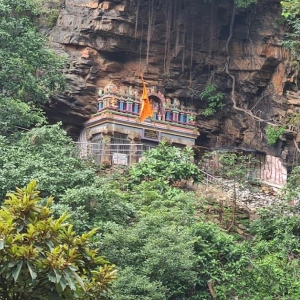Recommended for you
Ketu Mantra for leadership skills

om dhoomravarnaaya vidmahe vikri'taananaaya dheemahi. tannah' ketuh' prachodayaat.....
Click here to know more..Ahobilam - Lord Narasimha's Sacred Abode

Ahobilam, a sacred pilgrimage site in India, is renowned as the abode of Lord Narasimha, the fierce half-man, half-lion incarnation of Vishnu. Explore....
Click here to know more..Angaraka Kavacham

asya shree-angaarakakavachastotramantrasya. kashyapa-ri'shih'. anusht'up chhandah'. angaarako devataa. bhaumapreetyartham jape viniyogah'. raktaambaro....
Click here to know more..
English Topics
Vedas
Click on any topic to open
- 85 Culture vis-a-vis Agriculture
- 84 Whenever I have Read any Part of the Vedas
- 83 Vedas - Holy Books Of Hinduism
- 82 How The Vedas Manifested Into Material Objects
- 81 What does Rigveda contain?
- 80 Why Vedas are called Shruti?
- 79 What Vedas say about periods
- 78 How Vedas Came Into Existence
- 77 Vedas are eternal, not written by anyone
- 76 Relationship Between The Vedas And The World
Please wait while the audio list loads..
30
Ganapathy
Shiva
Hanuman
Devi
Vishnu Sahasranama
Mahabharatam
Practical Wisdom
Yoga Vasishta
Vedas
Rituals
Rare Topics
Devi Mahatmyam
Glory of Venkatesha
Shani Mahatmya
Story of Sri Yantra
Rudram Explained
Atharva Sheersha
Sri Suktam
Kathopanishad
Ramayana
Mystique
Mantra Shastra
Bharat Matha
Bhagavatam
Astrology
Temples
Spiritual books
Purana Stories
Festivals
Sages and Saints
